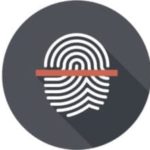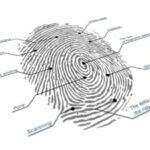
SecuGen is one of the leading players in the fingerprint biometrics space, with a history going back decades; and with that being the case, the company’s Sales VP, Jeff Brown, is a familiar face to many in the biometrics industry. With his and SecuGen’s deep expertise, many will be interested to get his analysis and insights from this latest interview with FindBiometrics Founder Peter O’Neill.
The conversation covers a lot of ground, with COVID-19 and the broad changes that the pandemic has wrought being a central focus. Concerns about touching shared surfaces had an undeniable impact on the fingerprint biometrics industry, and Brown addresses the issue with candor. And while the pandemic has continued to present challenges for everyone in the biometrics industry, Brown also discusses some significant wins for SecuGen in recent months, including the integration of a SecuGen sensor into a medical cart product, the launch of the Unity 20 Serial fingerprint sensor, and the development of a groundbreaking new contactless sensor solution that will soon hit the commercial market.
Read the full interview with Jeff Brown, VP Sales, SecuGen:
Peter O’Neill, Founder, FindBiometrics: Everything in our industry is moving so quickly, and I’d like to start on an update on a big topic. Last time we spoke, you and I discussed the effects of the pandemic on the use of fingerprint biometrics. Now, as vaccines bring immunity to the public and with wider acceptance that the coronavirus doesn’t spread primarily via surface transmission, how have you seen attitudes towards fingerprint recognition change in recent months?
Jeff Brown, Vice President Sales, SecuGen: This is a big topic, Peter, and related to that question, I want to tell you about an exciting new product we are planning to release, but let me save that news for later. A lot of the changes we have experienced as a result of the pandemic will be long lasting. COVID-19 forced a huge number of people to work from home. Will they go back to the office? Yes, many will, but not everyone. I think many people like this change. Businesses need less office space and less in the way of utilities. It is a money saver. Workers enjoy commuting from their bedrooms to their home offices. So, while there is and will be a swing back to working in offices it will likely be incomplete. We are seeing the hybrid approach becoming a part of the new normal.
The same thing, in my view, is true of the biometrics industry. At first there was a pronounced move to touchless biometrics like facial recognition. As you mentioned, the scientists have told us that COVID-19 is not transmitted by contact with surfaces. Nevertheless, people want to be safe and are looking for ways to stay extra safe. Although many people are now less afraid of touching a fingerprint sensor, some are still concerned. This will take a very long time to change and may never go back entirely to the way it used to be.
I think it is important to point out that there has always been a segment of the market that was sensitive to this issue. We have been asked for many years about cleaning the surface of the fingerprint readers. At one point we considered putting an antimicrobial coating on our sensors. This sensitivity to sharing fingerprint readers is something that previously we would see only in certain regions and market segments. Now, of course, it is nearly universal.
FindBiometrics: We recently reported on the integration of SecuGen’s U20-A fingerprint sensor into the StatSafe medical cart from Phoenix. We have seen a lot of excitement building around the healthcare biometrics market. As a company that focuses so strongly on working with developers and integrators, what makes working with healthcare-focused partners like Phoenix unique, and why do they choose to work with SecuGen?
SecuGen: Well healthcare is one of the industries, like banking, where people demand absolute accountability. You would no more like to dispense medicine to the wrong patient than you would want to dispense money to the wrong customer. You would want to make sure that the person dispensing that medicine is the qualified medical professional that should be doing so.
SecuGen is organized to work with hardware OEMS like Phoenix LTC in the healthcare and other industries. The process of integrating a fingerprint sensor into a hardware product is a similar task no matter the industry. We focus every day on developing and providing the products, tools, and technical support that OEMS need and expect to be able to integrate our products. We have over 20 years of experience working with hardware OEMs as this has been a major focus of our business from the start.
FindBiometrics: SecuGen launched its new ultra-compact Unity 20 Serial in April. Its features – like on-device matching, liveness detection, its small size – make it extremely flexible in terms of potential integrations. I can imagine it working well in retail and enterprise-focused scenarios. What sort of applications is this new solution best suited for?
SecuGen: Peter, the story of the Unity 20 Serial is really a story about the Unity line of sensors. Years ago, we used to sell a fingerprint sensor connected to a separate board with a cable. The board would provide the intelligence to carry out the fingerprint matching and return a pass or fail. These boards typically had a serial interface. We shrank that board and unified it with the sensor. Hence the product line name, Unity. We further designed Unity sensors to have multiple possible interfaces besides serial to meet the needs of the end user or application.
The board on Unity fingerprint sensors is what makes Unity more capable than a regular USB sensor. Unity provides a complete Linux programming environment and built-in software that allow you to register, match, store and manage fingerprints all on the device. All the biometric activity is contained in the device without any dependency on the host. The Unity 20 Serial is our first sensor with an RS232 interface that is ideal for what might be considered “legacy” systems such as POS machines that only have serial ports. However, as I said, the Unity line is the real story, and the multiple kinds of connectivity are like the individual characters. The Unity 20 Bluetooth reader is based on this line and so is our Unity 20 USB sensor. They each have the same core sensor and board but communicate with the outside world in their own specific way. There will be other Unity readers as well. The customizability of the Unity line makes it not only a powerful development tool for our partners but for SecuGen as well. It gives us the ability to design and deliver a wide variety of products quickly and efficiently.
FindBiometrics: Jeff, you have been in this business for a long time. What changes, if any, do you see in store for the biometrics industry over the next year or two?
SecuGen: Well Peter, as Mark Twain said, “It is difficult to make predictions, particularly about the future.” Of course, no one can predict the details with any accuracy, but the broad outlines can sometimes be distinguished in advance. Recently, in response to the ransomware attacks directed at US companies and infrastructure, the Cybersecurity and Infrastructure Security Agency (CISA) and the FBI have issued recommendations to critical infrastructure asset owners. One of those recommendations is to implement two-factor authentication for what they refer to as OT and IT networks, which are information technology (IT) networks and an entity’s operational technology (OT) networks.
This measure may not have stopped the most recent attack. Nevertheless, the US government seems serious in promoting increased focus on locking down this country’s critical infrastructure. This will resonate outside of the US as well.
As your readers are well equipped to understand, there are many ways to implement two-factor or multi-factor authentication, but biometrics is one of the strongest ways, a good deal more secure than pins or passwords. I believe this push by the government will help to accelerate the adoption of biometrics here and around the world. I think our industry has a chance, once again, to help respond to a very serious challenge from various malevolent actors around the world.
FindBiometrics: What can we expect to see from SecuGen in the second half of 2021?
SecuGen: We actually have quite a bit coming down the pipeline. I don’t want to reveal everything, but in the near term you will see a FAP 30 fingerprint reader and sensor, the Hamster Pro 30 and U30 respectively. We are working on a FIDO 2 authenticator, based on the Unity line. But the new product that seems to be generating the most buzz is the Hamster Air, which we are just now about to release.
The Hamster Air is a touchless fingerprint reader. It is a contactless USB single-finger reader. There are some touchless or contactless 4-finger devices on the market, but they are very, very expensive. Not the kind of thing that you would be able to purchase for your laptop unless you want to invest thousands of dollars for just the fingerprint reader. The Hamster Air has a suggested retail price of just over $100. Even at this low price, we’re still able to maintain SecuGen’s emphasis on quality as we do with all our products.
At the beginning of the pandemic, like many others, I was wearing surgical gloves to the supermarket and wiping down my groceries when I got home. You will be happy to know I no longer wipe down the groceries. In March of 2020 it occurred to me that people were going to want touchless biometrics. It was a pretty easy call. So, I asked our VP of Engineering, Dan Riley, if he thought this was feasible. In 24 hours he had built a mockup of a touchless reader. Dan demonstrated it to our management team and our CEO, Won Lee, immediately saw the potential. So, we asked our hardware engineers to see what they could come up with. They worked swiftly and have designed a fantastic product. It is amazing what our engineering team was able to do in such a short time. I am not aware of another product on the market like the Hamster Air. Our partners are excited and can’t wait to be able to offer this to their customers.







Follow Us